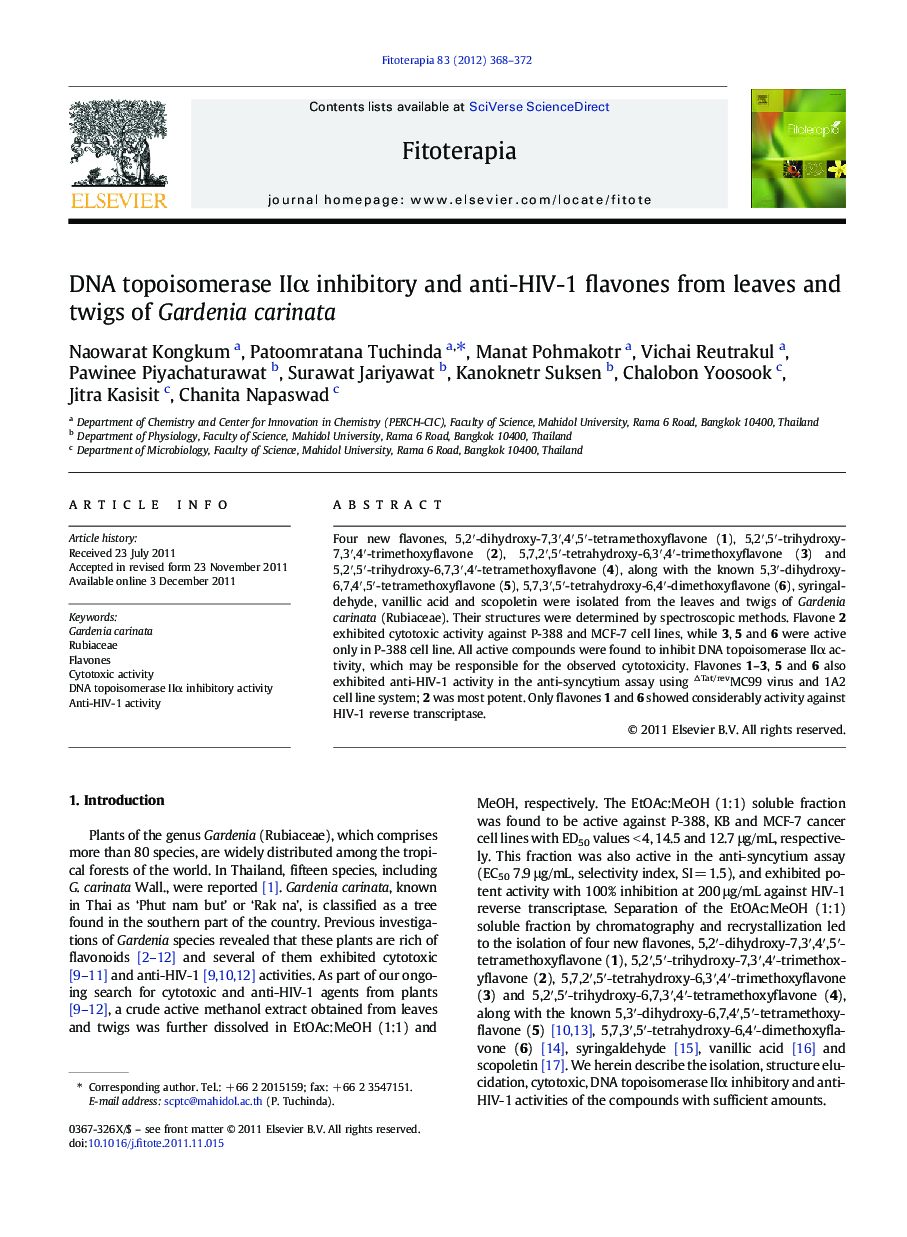| Article ID | Journal | Published Year | Pages | File Type |
|---|---|---|---|---|
| 2538822 | Fitoterapia | 2012 | 5 Pages |
Four new flavones, 5,2′-dihydroxy-7,3′,4′,5′-tetramethoxyflavone (1), 5,2′,5′-trihydroxy-7,3′,4′-trimethoxyflavone (2), 5,7,2′,5′-tetrahydroxy-6,3′,4′-trimethoxyflavone (3) and 5,2′,5′-trihydroxy-6,7,3′,4′-tetramethoxyflavone (4), along with the known 5,3′-dihydroxy-6,7,4′,5′-tetramethoxyflavone (5), 5,7,3′,5′-tetrahydroxy-6,4′-dimethoxyflavone (6), syringaldehyde, vanillic acid and scopoletin were isolated from the leaves and twigs of Gardenia carinata (Rubiaceae). Their structures were determined by spectroscopic methods. Flavone 2 exhibited cytotoxic activity against P-388 and MCF-7 cell lines, while 3, 5 and 6 were active only in P-388 cell line. All active compounds were found to inhibit DNA topoisomerase IIα activity, which may be responsible for the observed cytotoxicity. Flavones 1–3, 5 and 6 also exhibited anti-HIV-1 activity in the anti-syncytium assay using ∆Tat/revMC99 virus and 1A2 cell line system; 2 was most potent. Only flavones 1 and 6 showed considerably activity against HIV-1 reverse transcriptase.
Graphical abstractFour new flavones 1–4 were first isolated from leaves and twigs of Gardenia carinata, along with five known compounds. Flavone 2 exhibited cytotoxic activity against P-388 and MCF-7 cell lines, while 3, 5 and 6 were active only in P-388 cell line. All active compounds were found to inhibit DNA topoisomerase IIα activity, which may be responsible for the observed cytotoxicity. Flavones 1–3, 5 and 6 also exhibited anti-HIV-1 activity in anti-syncytium assay using ∆Tat/revMC99 virus and 1A2 cell line system; 2 was most potent. Only flavones 1 and 6 showed considerably activity against HIV-1 reverse transcriptase.Figure optionsDownload full-size imageDownload as PowerPoint slide
